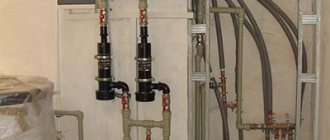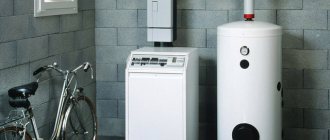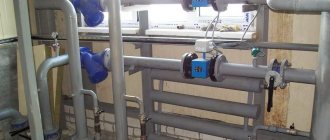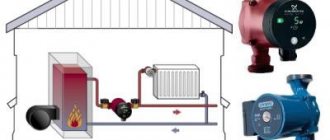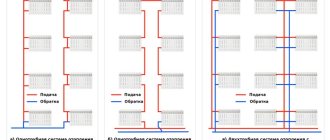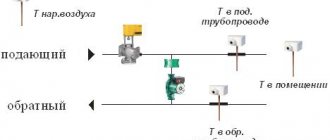Pravozhil.com > Housing and communal services issues > Homeowners' associations > Who needs an autonomous boiler room in an apartment building and why
Utilities are becoming more expensive every day. Therefore, more and more often, users are looking for an alternative that would be available to everyone. One autonomous boiler room should be enough to satisfy the needs of the entire apartment building. This ensures the supply of high-quality coolant and other resources. You should study the decision in advance, along with its negative and positive sides.
Autonomous gas boiler house: what are the advantages?
One of the main advantages is the reduction of heat loss during coolant transportation
Separate rooms are used to install equipment. An acceptable option is separate rooms that complement the roof.
All equipment is placed inside to ensure continuous operation of the structure. The main thing is that there is enough power to warm up the radiators and maintain the temperature of the water throughout the house.
Mini-boiler rooms are supplied with all equipment that ensures stable operation. Autonomous systems require the use of only modern technologies. The benefit is also greater from the fact that one boiler room can be used to provide resources to several houses at once.
The greatest benefits come from taking into account the following factors:
- Reducing the distance between the heat generator and radiators and pipes in apartments.
Heat loss during water circulation in systems becomes less. According to rough estimates, residents' expenses in such situations are reduced by 30%, or even more.
- The standard result of installing autonomous boiler houses is a reduction in utility costs.
The systems do not require such regular maintenance or dismantling of specific elements. Modern equipment is distinguished by high quality manufacturing and reliability.
Water travels a shorter path from the central coolant. Inside the system, the rate at which heating occurs increases. Hot water, batteries are operated at elevated temperatures. But the settings of a gas boiler can be adjusted so that everyone is comfortable.
Cost-effectiveness and heating speed are the main advantages for those who choose the autonomous option.
The central heating switches on when specific temperatures are reached. But cold weather often lasts longer, and during this time residents endure cold temperatures in their apartments.
Disadvantages of a centralized heating system
Today in Russia, the vast majority of residential buildings, hospitals, kindergartens and administrative buildings use a centralized heat supply system and hot water supply from district heating stations (RTS), combined heat and power plants (CHP) or large boiler houses.
It's no secret that the condition of both the thermal power plants themselves and municipal boiler houses, as well as heating networks, leaves much to be desired, and in some cities is close to catastrophic. Deterioration of heating mains, irrational use of capacity, high energy consumption of outdated equipment, frequent accidents and repairs lead to the fact that consumers are forced to pay for huge heat losses (up to 20% of consumption), depreciation of networks and labor costs for maintenance personnel.
In addition, residents of houses connected to a central heating system depend on the beginning and end of the heating season adopted by the city administration, despite the temperature in the room. This fact forces you to use household heaters in the fall, which leads to an increase in electricity bills, and turn off the radiators in the spring, while continuing to pay bills with extortionate amounts for heating.
Preventative shutdown of hot water in the summer for a period of two weeks is also associated with a large number of facilities connected to one thermal power plant or boiler house, where diagnostic or repair work is being carried out.
Often in apartments on the upper floors the quality of heating and hot water decreases due to the insufficiently high temperature of the water in the pipes.
These disadvantages have led to the fact that developers are increasingly building block (modular) boiler houses to supply heat to residential complexes and even individual apartment buildings.
Are there any disadvantages to modern heating systems?
There are fewer disadvantages when compared with central heating systems. Only searching for equipment causes problems for users. You can't do without additional expenses. But as a result, the level of comfort increases significantly.
Gas boiler houses cannot be installed without separate rooms. To do this, you will need to address the following issues:
- Select the required area near the house.
- Bring the roof to meet the required technical conditions.
- The structure with blocks is mounted on the roof.
It will be necessary to spend additional resources, either on the developer or on the housing stock created at the expense of the residents.
Gas heating systems can emit substances that are harmful to the environment. It is necessary to additionally provide a system responsible for filtration. To comply with SNiP standards, you must also select the appropriate equipment. Because of this, the purchase cost increases.
But cutting into a central highway also requires expenses due to the need to obtain several permits from regulatory authorities. You have to wait for a decision to be made; the process often drags on for more than one month.
But here residents make a separate decision in each case.
Flaws
Let's talk about the disadvantages of such systems.
- An autonomous mini-boiler room must be placed in a separate room: it is located in close proximity to the facility, sometimes in the form of a stationary building, sometimes in the form of an extension.
- Cleaning systems need to be thought through. Any boiler room pollutes the environment in one way or another, which is unacceptable for the courtyards of residential buildings. Therefore, it must be equipped with cleaning systems in accordance with rules and regulations. This increases construction costs.
- High cost associated with the low prevalence of autonomous boiler houses - they have not yet been put into production. Therefore, not all developers can afford them.
However, modern engineering solutions can eliminate some of the shortcomings. For example, an autonomous boiler room can be installed on the roof if the building complies with the standards prescribed in SNiP. It is good if the roof boiler room is included in the project at the construction stage.
Do you need a reliable project for an autonomous mini-boiler room for an apartment building? Fill out the questionnaire at AllianceTeplo - we will help with the design and construction of a boiler house of any type.
Mini boiler rooms.
Depending on the type, the boiler room can operate on solid, gaseous, liquid fuel or be of a combined type. A standard mini boiler room usually has a thermal power of 0.1-0.5 MW, which allows it to be used:
- for supplying hot water and heating private cottages, municipal buildings;
- for installation on the roofs of new properties that are under construction and do not yet require a significant amount of heat;
- to provide heat to sanatoriums, holiday villages, recreation centers, etc.
Block-modular types of boiler houses
They do not require a large area due to their compact size. The construction site is first filled with special blocks. Then they are combined into a structure that maintains maximum performance under any conditions.
At the factory, the entire system with elements important for operation is assembled. At the final stage, normal operation is ensured by adding the necessary equipment.
After completing the assembly stage, the station is ready for further operation. The manufacturer provides for assembly in advance and installs the necessary modules. Separate rooms are equipped for staff service.
Under such circumstances, it is impossible to do without high-quality insulation and a ventilation system with sufficient reliability. It is permissible to create an unusual design and an attractive appearance. Manufacturers provide in advance that the installation will be carried out on the roof.
The main thing is to determine the load-bearing capacity of the building based on the results of the examination. If necessary, organize events and measures to increase the indicator.
The corresponding platform will rest on the supporting elements of the building. Only in this case does the block maintain maximum stability. Next, a fire-resistant block is created under the gas boiler room.
Usually a layer of concrete is poured to solve the problem. Railings should be installed around the perimeter of the roof to ensure maximum safety.
In some cases, measures to increase sound insulation cannot be avoided.
Block boiler rooms are an excellent option for buildings originally connected to centralized heating. But in this case, the equipment must have acceptable technical conditions. It is necessary to create a project.
Built-in boiler rooms on the roof of the house
Thinking through the layout occurs in advance, when drawing up project papers. A separate description is required for each of the elements present inside. Engineers need to calculate many indicators, the more the better. Then remodeling the premises will cost much more.
The construction of such buildings is accompanied by a number of activities:
- Protection against fires, explosions and gas leaks.
- Protection of the boiler room from additional vibrations.
- Sound insulation and noise suppression, including those coming from the boiler room itself.
After such procedures, the equipment will work more efficiently. Built-in boiler rooms have only been provided in the last 5-10 years; previously, all houses were connected only to a centralized system.
Compliance with safety standards and legal regulations implies that the work is entrusted only to engineers with certain experience.
Some features of the design of autonomous boiler houses
To comply with safety requirements, no more than two boilers are placed inside boiler rooms - one main, the other backup. Installation is carried out in the central part of the room, then the least problems arise with maintenance and repair.
For wall coverings, it is imperative to use materials that do not support combustion. An example of an excellent option is steel sheets. The floors are covered with concrete screed, and the non-combustible coating is laid on top. The main requirement is a non-slip coating.
Natural gas is the composition processed during the operation of autonomous boiler houses. Installations with automatic operation contribute to uninterrupted supply. If a leak or breakdown is detected, special sensors simply block the operation of the system.
For developers, one of the most profitable options will be the purchase of modular autonomous boiler houses. Delivery and installation of such installations takes a minimum amount of time. The equipment also has an acceptable price level. In the future, such a purchase will protect against the disadvantages that centralized systems have.
An analysis of typical mistakes in installing boiler rooms can be found in this video:
See also Telephone numbers for consultation Dec 13, 2021 Victoria M. 907
Share this post
Discussion: there is 1 comment
- Ivan says:
12/21/2019 at 18:23Such a boiler room certainly provides serious savings. Central heating is now very expensive. Do the manufacturers of such autonomous boilers provide guarantees that the boiler will operate without failures in a house with many floors?
Answer
Roof boiler room in an apartment building 2021
Roof boiler rooms were invented specifically so that their design could be done on the roofs of apartment buildings. It can also be installed on separate structures that are installed on special bases.
Rice. 1 Roof boiler room
Roof-top gas boiler houses are installed on houses in those places where designing and complying with the standards of a centralized gas main is, in principle, impossible. If buildings in large cities with reconstruction and spot construction are located in the city center, then the norm for the construction of elite complexes is the design of roof-top boiler houses. And all due to the fact that the area is small and, accordingly, the price norm for purchasing land is very high, so it is impossible to install stationary centralized heating systems.
Rice. 2 Roof gas boiler room
Roof boiler rooms can be installed during the reconstruction of apartment buildings and when designing new tall buildings.
Building design is possible in two options:
- The first option is the so-called frame structure, which is arranged in blocks. For this option, it is necessary to erect a special building. Designing roof units in this form is suitable for new multi-apartment buildings.
- The second option for designing boiler houses is roof-mounted gas boiler houses with block modules. Sandwich panels are used for their design and construction.
- Roof boiler houses have 2 types of boiler applications: steam boiler units and water heating equipment.
Rice. 3 Gas equipment on the roof
Roof boiler rooms for apartment buildings are a modern solution to the problem of designing autonomous heating without connection to a centralized gas main. After all, modern building construction sometimes requires standards that cannot be implemented. Heat loss, thanks to this design of heating for apartment buildings, is low, so installing a rooftop boiler room is even the norm for an economical option.
The popularity of rooftop gas boiler houses is growing every day, since thanks to this heating design, the costs of land allocation will disappear, and there will be no need to design a heating main. And even the temperature can be set more accurately.
What other advantages does designing rooftop boiler houses have? Are there any disadvantages to using it for apartment buildings? Are there safety regulations that must be followed when designing boiler rooms on rooftops?
The requirements and standards for the design and installation of this structure are not significant at all, but still, they exist. Since safety is the main thing in our world, and first of all we need to take care of it.
Rice. 4 Autonomous boiler houses
So what standards, precautions and operational measures need to be taken to ensure that the rooftop boiler room works long and well?
- It is necessary to check the supply and exhaust valves, since thanks to them the boiler room is ventilated.
- It is necessary to install sensors, the design of which controls the process of operation of the gas device and which are triggered directly during the lightest fires. These are necessary to prevent a fire or explosion from occurring. It is advisable that when designing rooftop installations, a function is installed that automatically extinguishes the first signs of a fire.
- It is also necessary to install a gas-insulating flange, which can shut down the entire system at the first sign of a fire.
- On the roofs of multi-storey buildings, it is necessary to install an alarm system that displays and transmits light and sound signals in case of fire.
- The height of the chimney should be much higher than the height of the roof boiler room. The minimum difference is 2 m. Each gas boiler in the house must have a separate chimney, but it is imperative that they be the same height. What the distance between them will be does not matter.
- Roof-top gas units must operate from separate electricity, that is, have a separate branch of the electrical network. The voltage in the house may be different, so you should not take risks with electricity, since due to a failure in the electrical network in the house, problems may arise in the operation of the entire heating system. A diesel generator may be suitable as an autonomous power source.
- This equipment cannot be installed directly above apartments in houses. The presence of a technical floor is a prerequisite for installing a roof boiler room. The floor on which the rooftop gas units will stand must be made of reinforced concrete slabs.
- Do not forget that this heating equipment makes a lot of noise, therefore, in order to be able to install roof-top boiler rooms in multi-storey buildings, it is necessary to meet special requirements in accordance with sound insulation standards in premises.
- The boiler room must have windows and doors that lead directly to the roof. A separate elevator is required, as it will only be used for firefighters. It is also necessary to design a service exit. The boiler room must be illuminated according to the standards (0.03 sq. m/1 m³).
- You should also not forget about the service personnel - there should be a separate safe exit for them during the design.
Rice. 5 Gas equipment on the roof
After designing and installing a gas roof boiler room, it is necessary to look after it, that is, perform maintenance. Maintenance personnel can also handle this. But we also shouldn’t forget about gas service representatives. They must check this equipment at least once a year.
When considering all the disadvantages and advantages of this unit, you will notice that, of course, there are more advantages. Construction companies choose rooftop units for installation in apartment buildings. And all because it is both economical and reasonable, and they work in accordance with all established standards. This is especially convenient when either there is no centralized gas main or it is abandoned during construction.
And so, the main advantages of this equipment:
- Roof units can do without a separate place for themselves. That is, it is not necessary for them to install an additional building. A roof is also suitable for operating gas equipment in a multi-storey building. The water frame or collector may be located away from the design of the roof boiler room (attic, basement).
- Heat loss is very low when these units operate. There is no longer a need to install heating mains, and thanks to this, much less money will be spent on equipment maintenance.
- Costs for connecting to centralized communications are also reduced. And everyone knows that you have to pay a tidy sum for this in our time.
- The design of roof boiler houses has no more requirements. Forced ventilation and installation of chimneys will not be required. SNiP makes it possible for such huge equipment to heat buildings up to 30 m high.
- When designing these equipment in apartment buildings, all standards will be observed and, according to SNiP, the system can be fully automated. The operator will not even be hired for a whole working day, but only for a couple of hours. Thanks to SNiP, the standards for designing rooftop boiler houses will make it possible to install sensors on them that will monitor the temperature outside and turn on the required heating level themselves.
- The good thing is that people will no longer have to adapt to the standards established in the country (there is no heating in the summer). The unit can also operate in the summer if necessary. Who can service a rooftop boiler room? Yes, simple staff who look after her all year round. You won't even need to call specialists. This equipment is easy to use.
This is interesting: Water temperature regulator in the hot water system 2021
If the equipment is designed according to SNiP, then in no case should it heat additional buildings. Since SNiP states that the power of the equipment should be exactly as much as is needed to design and heat the entire building.
Rice. 6 Based on two boilers
The pros and cons of a roof boiler room are already clear. Now it’s worth talking a little about the disadvantages. The shortcomings in SNiP and design standards are related to the requirements that were in the design of the building itself where the equipment will be installed.
- Introducing new standards in the construction of lifting systems, as well as design according to SNiP and installation of a heating system.
- If the weight of the equipment in the documents is limited, then the rooftop boiler room will not be able to exceed the weight specified in SNiP. And, accordingly, the installation will fail.
- This equipment requires the installation of complex automatic systems. This is also stated in SNiP.
- It is necessary to comply with all standards after designing work with such gas equipment.
- And it would not be superfluous to install fireproof systems in roof boiler rooms, which are made in accordance with all standards and described in SNiP.
Even during design, building codes and SNIP warn that the power of rooftop boiler houses on houses should be exactly enough to heat one building. The SNP also states that equipment is prohibited from exceeding the power required for the consumption of a multi-story building. All standards are specified during design. Calculations and standards according to SNIp must be carried out based on the maximum value of coolant flow.
If it is necessary to use a heating element of a rooftop boiler room on the roof of a house in order to heat adjacent ones, then only in this case it is possible not to adhere to the norms and SNP, but to slightly increase the productivity of the unit. The maximum that can be is 100% of all electricity in the main building.
Rice. 7 Block-modular boiler houses
If suddenly in the future it is planned to design according to all heating standards for adjacent buildings, then a rooftop boiler room, called a block-modular one, for a multi-storey building is simply the best option for design. The block-modular system can be rebuilt to suit any necessary needs.
Installing roof boiler rooms on houses is a very successful business that is becoming more and more popular. Designing this equipment is quite a profitable solution. Although such units on houses appeared in the Russian Federation and other CIS countries relatively recently, they have already managed to gain a good reputation. Due to the fact that the equipment is located on the roof of the house, apartments are heated more smoothly.
January, and with it winter, has passed the halfway mark. But in our climate, houses have to be heated both in spring and autumn, and hot water is generally needed all year round. And I would like to receive heat and hot water at minimal cost. Preferably, reducing losses on heating mains to zero. We talked about individual boilers in the material “How to avoid problems with installing autonomous heating in an apartment?” Now we will discuss the advantages and disadvantages of another option for reconstructing the heating system - rooftop boiler rooms.
A roof boiler room is an autonomous heating source designed to heat and provide hot water supply to residential buildings. As the name suggests, it is erected on the roof of a building, in a specially equipped room. We will not consider stationary roof boiler rooms here. They are constructed at the construction stage of the building, linked with it in terms of design and infrastructure, so local and regional authorities do not have questions regarding them. However, it can be recommended to build stationary rooftop boiler houses if there is a shortage of thermal power in the microdistrict under development.
But block-modular roof boiler rooms are purchased for an already completed building. A block-modular boiler room is manufactured to the required parameters, assembled by the supplier company, transported to the installation and commissioning site in a ready-made form, and is provided with a company guarantee. Its connection to heating networks takes an extremely short time. Another very interesting and useful property of block-modular roof boiler houses: their heating point can be located not only in the boiler room itself, but also in the basement of the consumer building, on the ground floor or on the first floor.
A heating point consists of elements of thermal power plants that ensure the connection of these plants to the heating network, their operability, control of heat consumption modes, conversion, regulation of coolant parameters and distribution of coolant by type of consumer. It transfers hot water to heating systems, to the hot water supply system. It also supplies the ventilation system of a residential building with heat (without which, say, the elementary pipes of garbage chutes would turn into a source of extremely unpleasant odor, and icy winds would whistle along the risers in the bathrooms).
But why is it so important that in the case of a block-modular boiler room it can be placed in the basement of the consumer building, as well as on the ground or first floor? Yes, because this makes it possible to link a block-modular roof boiler room with the existing heating, hot water supply and ventilation systems in the house. Risers, wiring, heating devices - all this will remain in place. Noisy pumps will remain in the basement or basement, driving water upward. At the same time, the fact that a block-modular roof boiler house operating on gas is essentially a huge individual heating boiler, this gives us the opportunity to formulate its advantages.
First of all, it eliminates losses on the heating main, which will reduce current heating costs due to resource savings; eliminates the risk of being left without heat and hot water in the event of a communications breakdown. If the capacity of centralized boiler houses in the microdistrict is not enough to ensure the proper parameters of the coolant in cold weather, it will provide the house with heat in any conditions. These are its advantages, common to individual heating boilers.
The second group of advantages distinguishes it for the better from individual boilers. Well, the most important thing is the ability to preserve the same wiring that was originally laid by the builders of the house. After all, having hung a heating boiler in the kitchen or hallway, we will be forced to lead pipes to it from batteries located throughout the apartment (previously, batteries were powered from vertical risers, and horizontal connections to them ran through attics and basements). So the house switches to individual boilers - each apartment will inevitably undergo significant repairs, which may not be at all in the plans and financial capabilities of the residents). And in the case of a roof boiler room, these unpleasant hassles can be avoided.
This is interesting: Chairman of the housing cooperative - rights and obligations, appointment, dismissal 2021
The third group of advantages is related to operation. Unlike a gas water heater, which operated in short-term mode, an individual heating boiler burns constantly during the heating period, about seven months in our latitudes. It is, of course, automated. But it’s still good if a large family lives in the apartment and someone is keeping an eye on it so that the younger ones don’t get to the boiler with a set of screwdrivers.
On the other hand, the flexibility of an individual heating boiler is, of course, higher than in the case of a centralized block-modular roof boiler room. You can run it in heating mode and simply on a too cool and wet summer day - in the case of a roof boiler room, you will need a decision from the house council or a similar body.
Economics will give you the answer to this question. First of all, we must keep in mind that switching a house to individual boilers and installing roof-top boiler houses, although it increases living comfort and provides long-term savings on heating and hot water bills, is associated with the need for capital investments. If residents of a house who want to improve the situation with heat supply do not have free funds, then it is better to forget about this option and limit themselves to standard heat-saving measures.
These are not the only costs. A roof boiler room cannot be mounted on floor slabs under which there is a living space - that is, if there is no technical floor, it will have to be built on part of the roof. Under the roof boiler room there must be waterproofing with a layer thickness of at least 100 mm, and reliable drainage. If the building height is higher than 26.5 m (above a standard nine-story building), additional approvals from the fire services will be required. But guidelines can be given approximately as follows.
For houses with 36 apartments or less, it will most likely be cheaper to install individual heating boilers during reconstruction. But with a hundred apartments and above, the economy will lean very strongly towards the roof boiler house (the effect of capacity growth is faster than the price!). In intermediate cases, calculations of various options are necessary - this is the responsible and qualified work of estimators in the construction industry, but we tried to give the most general guidelines and the most general ideas about roof boiler houses.
If you liked the article, recommend it to your friends, acquaintances or colleagues related to municipal or public service. It seems to us that it will be both useful and pleasant for them. When reprinting materials, reference to the original source is required.
offers design and installation of boiler rooms on the roof of a multi-storey building!
Our company offers optimal value for money. We work on a turnkey basis, providing a full range of services from project drawing up to commissioning using the most modern energy-saving technologies.
The efficiency of roof boiler houses in an apartment building from Alyansteplo is 94–95%, they pay for themselves in several years. Fill out the questionnaire, call, ask - we will advise you on all issues.
Operation and maintenance of a boiler room on the roof of a house is possible either in a block-modular design, or if its construction was envisaged during the construction of the house: this model is called “built-in”. But in 95% of cases, the roof boiler room of a residential building is a complex of module blocks that are assembled at a factory, delivered to a high-rise building and installed on site.
The construction of a boiler room on the roof of a house is ordered in order to save money and get rid of the “connection” to centralized heating networks. Own boiler room gives residents of the house 30% savings on payments, and also the opportunity to start and end the heating season, based not on a schedule, but on the real air temperature.
Prices for a boiler room on the roof of a multi-storey building start from 5 million rubles. This includes all work, including design, construction and commissioning, and the full cost of the equipment.
Installation of a boiler room on the roof of a house - obtaining a completely autonomous heating station. This has a number of advantages:
- There is no need to enter into contracts with all sorts of organizations and pay them for maintenance of the boiler room on the roof of the house.
- Reducing heat loss, which invariably occurs if the boiler room is installed at a distance from the heated object. The heating networks through which the medium is transferred to housing have been updated, which means their efficiency is higher.
- Payments for heat supply are reduced to a minimum level, also because the rooftop gas boiler room in an apartment building is automated and does not require the constant presence of maintenance personnel.
- The heating season can begin and end when it is convenient for residents and dictated by common sense. If the cold weather arrived earlier, you can start the rooftop boiler room earlier than the “official” date.
- Many people ask whether houses with a boiler room on the roof are safe. Our answer is absolutely. All installations undergo multiple testing, and complex signaling and fire-fighting equipment is installed. If you turn to professionals to build a boiler room on the roof of a multi-storey building, any risks are reduced to zero.
Question No. 1 : Is a gas boiler room on the roof of a multi-story building a common property of the building?
Answer : Yes, in accordance with Art. 36 clause 1 of the Housing Code of the Russian Federation. All technical premises belong to the residents of the house. Responsibility for the boiler room lies with the contractor who has been assigned this task by the homeowners. That is why, if a contract for the maintenance of a boiler room on the roof of a house was concluded without the consent of absolutely all residents of the house, it can be challenged in court.
Question No. 2 : Is the roof boiler room a separate floor?
Answer : No, a roof boiler room is a building that is erected on the roof and is not considered an additional floor. A technical room is considered a floor only if it is located in the attic, basement or anywhere between residential floors, and it must be higher than 1.8 m in height.
Question No. 3 : Do I need a license to operate a boiler room on the roof of a multi-story building?
Answer : A license is required for boiler houses that operate on natural gas and serve the population, and at the same time have a hazard class higher than 4. All this is specified in Federal Law 116. A license is also required for boiler houses that are located on the technical floors of a residential building.
Question No. 4 : Is there noise from the boiler room on the roof?
Answer : No higher than 60 dBA in the boiler room itself and 35 dBA in nearby apartments - these are the restrictions dictated by law. Noise should not disturb residents. The most you will hear is a slight hum on the upper floors.
Question No. 5 : Is a rooftop boiler room beneficial for residents?
Answer : The cost of a boiler room on the roof of a multi-storey building is divided among all residents if they are its owners. The service life is over 15 years, after which it is necessary to buy a new boiler. At the same time, residents pay exclusively for electricity and gas, saving on heating on average 30–45%.
This is interesting: Residential building energy efficiency class 2021
offers design, construction, commissioning of a boiler room on the roof of a house, as well as its maintenance. Fill out the questionnaire and we will calculate the price of a boiler room on the roof of the house, and by phone you can get detailed advice on all questions and controversial issues.
An important factor when choosing an apartment in a multi-storey building is the opportunity to save on heating and hot water supply (DHW). There is an opinion that the use of an individual boiler installation significantly reduces utility costs. In this article, we will look at why developers are building autonomous boiler houses near their homes, what this heating system is, and how profitable and safe it is for residents.
Today in Russia, the vast majority of residential buildings, hospitals, kindergartens and administrative buildings use a centralized heat supply system and hot water supply from district heating stations (RTS), combined heat and power plants (CHP) or large boiler houses.
It's no secret that the condition of both the thermal power plants themselves and municipal boiler houses, as well as heating networks, leaves much to be desired, and in some cities is close to catastrophic. Deterioration of heating mains, irrational use of capacity, high energy consumption of outdated equipment, frequent accidents and repairs lead to the fact that consumers are forced to pay for huge heat losses (up to 20% of consumption), depreciation of networks and labor costs for maintenance personnel.
In addition, residents of houses connected to a central heating system depend on the beginning and end of the heating season adopted by the city administration, despite the temperature in the room. This fact forces you to use household heaters in the fall, which leads to an increase in electricity bills, and turn off the radiators in the spring, while continuing to pay bills with extortionate amounts for heating.
Preventative shutdown of hot water in the summer for a period of two weeks is also associated with a large number of facilities connected to one thermal power plant or boiler house, where diagnostic or repair work is being carried out.
Often in apartments on the upper floors the quality of heating and hot water decreases due to the insufficiently high temperature of the water in the pipes.
These disadvantages have led to the fact that developers are increasingly building block (modular) boiler houses to supply heat to residential complexes and even individual apartment buildings.
- Lack of engineering infrastructure for the development site;
- The distance of the object from city heating plants, but the presence of a gas pipeline nearby;
- Capacity shortages and inefficiency of the central heating system;
- Difficulty and/or high cost of coordinating technological connection to existing networks;
- The density of buildings in the central regions interferes with the work on laying heating networks;
- The development area, free of heating mains, allows for the creation of attractive recreation areas, parking spaces, and children's playgrounds.
In addition, the presence of an individual boiler room is presented by developers as an additional advantage for potential clients and allows them to position the property as comfort-class housing.
Block boiler units (BCU) are manufactured at the factory and delivered to the site in already assembled form, the so-called block modules. From the outside, this is a small one-story building that looks like a trailer made of sandwich panels, inside of which the following components and systems are installed:
- hot water boiler, fuel combustion chamber, heat exchangers;
- pumps for circulating water in the system;
- equipment for water treatment and purification;
- flues, chimneys;
- gas equipment (when using gas);
- DHW circuit equipment (if any);
- automatic control and dispatch system, instrumentation.
Based on the type of fuel consumed, gas, solid and liquid fuel are distinguished . Combinations of several fuel types are possible. Gas boiler houses are most widespread due to their high efficiency (up to 95%), and they are also the most environmentally friendly. Solid fuels include coal, firewood, peat, pallets, liquid fuels include fuel oil, diesel fuel, waste oil.
Based on the type of execution, the following modules of boiler plants are distinguished:
- Freestanding They are usually used to supply heat to several buildings and are located at a certain distance from them.
- Attached placed close to the end of the building.
- Roof located on the roof or technical floor of an apartment building.
The latter version is gaining popularity due to its technical and economic advantages, as well as better safety and environmental characteristics.
Savings on utilities compared to apartments of similar size heated from mains are at least 45%, and in some cases reaches 200 - 300%. This effect is the sum of several factors: there is no need to pay for heat loss, the cost of transporting coolant, the cost of maintaining and repairing worn-out main networks, and worker labor.
The calculation of payments for heating and hot water becomes clear and understandable to the consumer. It consists of the physical volumes of resources actually consumed for heat production during the billing period, multiplied by the tariffs corresponding to each resource. The consumption of raw materials, namely gas (or other fuel), cold water and electricity, is confirmed by metering devices. The total cost is distributed among the owners in proportion to the area of apartments and non-residential premises.
An additional advantage of having a home boiler room will be the independence of residents from the heating season schedule and planned hot water outages adopted by the city authorities. The ability to independently quickly control the power of thermal energy production depending on the temperature outside the window allows you to use resources efficiently, saving on utility bills.
In terms of safety, modern autonomous boiler systems are not inferior to centralized systems. From design to commissioning, the process of creating a block boiler house is controlled by supervisory authorities. In addition, automatic safety systems built into the control loop signal threats and block equipment operation in emergency situations. In case of breakdown, a backup boiler and pumps are provided.
In terms of environmental parameters of exhaust gas emissions into the atmosphere, a block boiler house is much safer than a thermal power plant, since the volume of pollution is an order of magnitude smaller, and if it is located on the roof, its dispersion is improved.
The only drawback of an autonomous boiler room for apartment owners is the fact that it belongs to the in-house engineering systems, that is, common property. According to the Housing Code of the Russian Federation, repairs and maintenance of such property are carried out at the expense of the owners of residential and non-residential premises. In practice, these needs are included in the tariff for the maintenance and repair of common property in an apartment building. But since the planned service life of the equipment is designed for 25 years, the considerable cost of its replacement and installation is extended over time and distributed over the area, ultimately remaining profitable for the apartment owner compared to a centralized heating system.
»
Other
Clogged sewerage in an apartment building: who is to blame? 2021
Read more
Other
How to keep accounting records in an HOA - step-by-step instructions 2021
Read more
Other
How to conclude a contract for garbage removal? 2021
Read more
Other
How to refuse a management company: step-by-step instructions 2021
Read more
Great article 0
